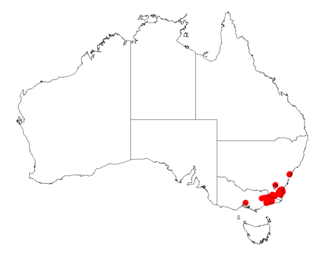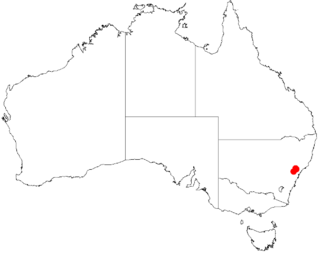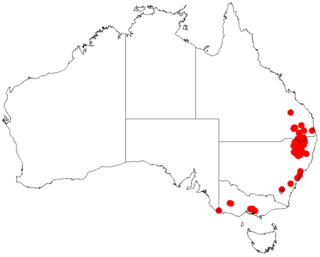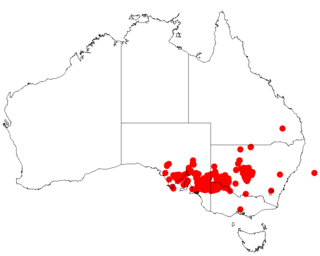
Acacia deanei is a tree native to Australia, which is useful for controlling soil erosion. There are two subspecies: Acacia deanei subsp. deanei and Acacia deanei subsp. paucijuga.

Acacia pravissima, commonly known as Ovens wattle, Oven wattle, wedge-leaved wattle and Tumut wattle, is a species of flowering plant in the legume family Fabaceae. It is an evergreen shrub native to Victoria, the South West Slopes and Southern Tablelands of New South Wales, Australia.

Acacia howittii, commonly known as sticky wattle or Howitt's wattle, is a tree species that is endemic to Victoria, Australia.

Acacia acradenia, commonly known as Velvet Hill wattle and silky wattle, is a shrub or tree belonging to the genus Acacia and the subgenus Juliflorae. It is native to northern and central Australia. The Indigenous Australian group the Nyangumarta peoples know it as walypuna the Alyawarr call it ampwey, the Jaminjung and Ngaliwurru know it as Mindiwirri, the Jaru as binbali or gundalyji, the Kaytetye as ampweye or arwele and the Warlpiri as ngardurrkura.

Acacia limbata is a shrub belonging to the genus Acacia and the subgenus Juliflorae that is endemic across northern Australia.

Acacia tenuissima, commonly known as narrow-leaved wattle, broom wattle, minyana, slender mulga or slender wattle, is a shrub belonging to the genus Acacia and the subgenus Juliflorae endemic to temperate and tropical areas of Australia. Indigenous Australians the Kurrama peoples know the plant as Janangungu and the Banyjima know it as Murruthurru.

Acacia dictyophleba, also known as the sandhill wattle, waxy wattle and feather veined wattle, is a shrub belonging to the genus Acacia and the subgenus Phyllodineae. The Nyangumarta peoples know the plant as Langkur or Lungkun and the Thalanyji know it as Jabandi.

Acacia silvestris, commonly known the Bodalla silver wattle, is a tree of the genus Acacia and the subgenus Botrycephalae. It is native to an area in south eastern New South Wales and coastal Victoria.

Acacia lateriticola is a shrub of the genus Acacia and the subgenus Pulchellae that is endemic to an area of south western Australia.

Acacia tayloriana is a shrub of the genus Acacia and the subgenus Pulchellae that is endemic to a small area of south western Australia

Acacia alaticaulis is a shrub to tree of the genus Acacia and the subgenus Botrycephalae that is native to eastern Australia.

Acacia oshanesii, commonly known as corkwood wattle and irish wattle, is a species of Acacia native to eastern Australia.

Acacia parvipinnula, commonly known as silver-stemmed wattle, is a species of Acacia native to eastern Australia.

Acacia muelleriana is a species of Acacia native to eastern Australia.

Acacia mollifolia, commonly known as the hairy silver wattle, velvet acacia and hoary silver wattle is a species of Acacia native to eastern Australia.

Acacia pruinosa, commonly known as the frosty wattle, is a species of Acacia native to eastern Australia.

Acacia debilis, commonly known as the spindly wattle, is a species of Acacia native to eastern Australia.

Acacia loroloba, commonly known as the Ma Ma Creek wattle, is a species of Acacia native to eastern Australia.

Acacia subtilinervis, also known as the net-veined wattle, is a rare wattle in the Juliflorae subgenus found in eastern Australia.

Acacia wilhelmiana, commonly known as dwarf nealie, Wilhelmi’s wattle and mist wattle, is a shrub belonging to the genus Acacia and the subgenus Plurinerves native to the mallee region of central and eastern Australia.




















